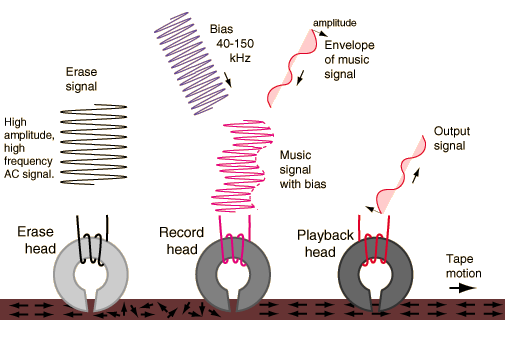Tape Recording Process

Sound reproduction concepts
Tape recording concepts
Reference
Rossing
Science of Sound
Ch 21
| HyperPhysics***** Sound | R Nave |
Tape Recording Process |
Index Sound reproduction concepts Tape recording concepts Reference Rossing Science of Sound Ch 21 | ||
|
Go Back |
Erase Head
|
Index Sound reproduction concepts Tape recording concepts Reference Rossing Science of Sound Ch 21 | |||
|
Go Back |
|
Index Sound reproduction concepts Tape recording concepts Reference Rossing Science of Sound Ch 21 | ||||
|
Go Back |
Tape Playback
|
Index Sound reproduction concepts Tape recording concepts Reference Rossing Science of Sound Ch 21 | |||
|
Go Back |